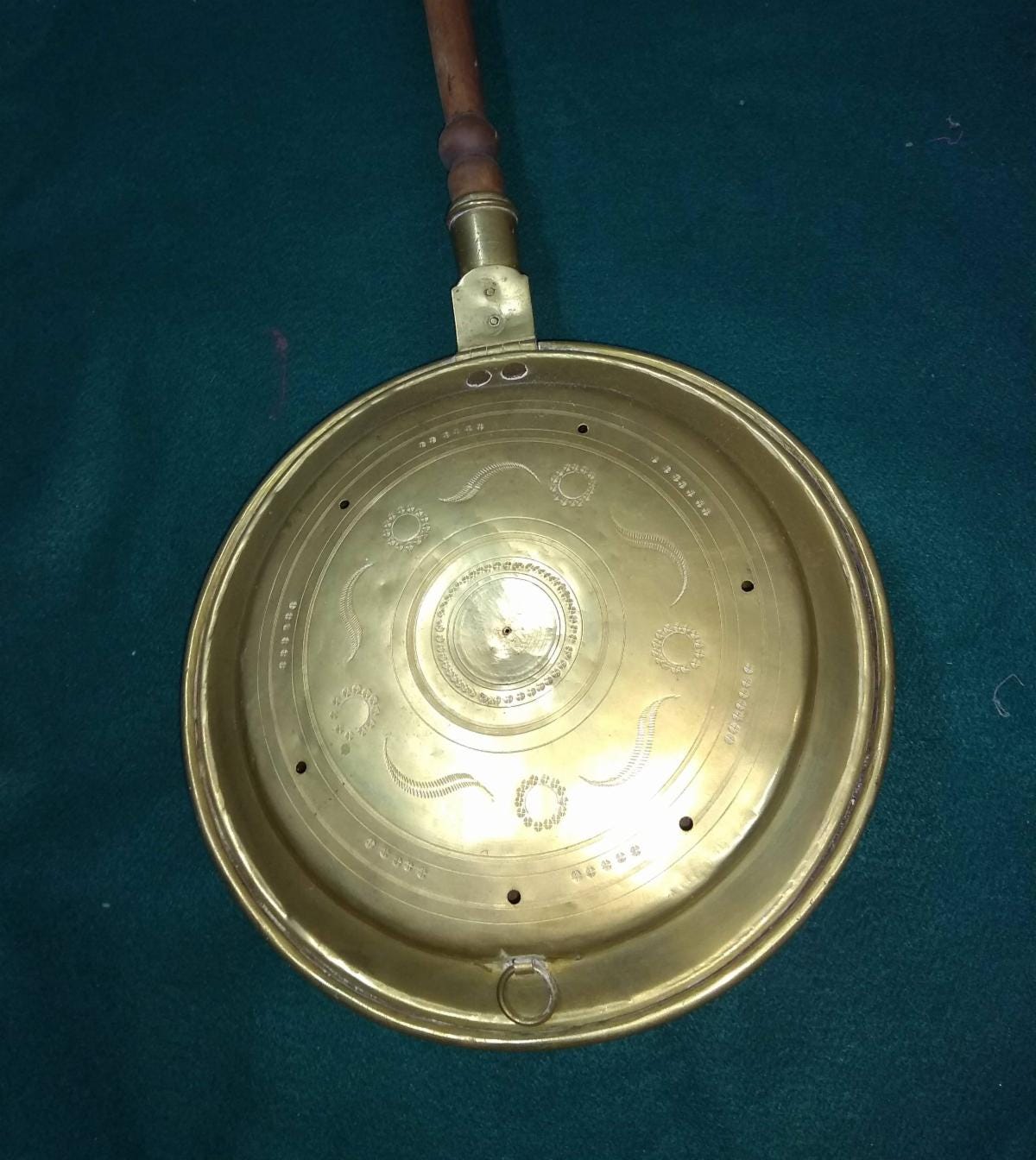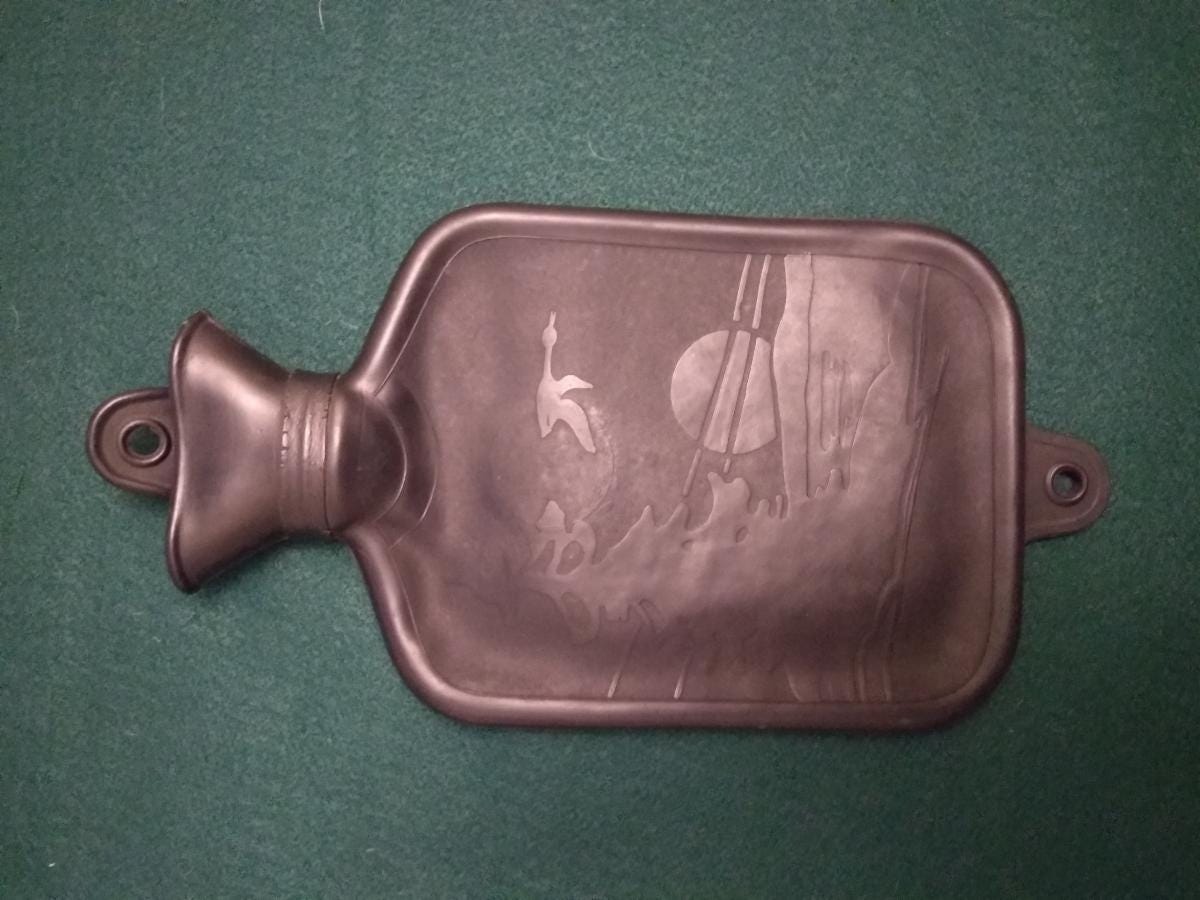ACHC #1967.004.1a
Imagine 200 years ago.
No central heat, just fire, wood and coal to provide warmth on snowy days and nights when the temperatures fell. This 19th century foot stove helped take the chill away.
Dating back to ancient times there have been many types of portable heaters to warm the fingers and toes. Some used heated stones or iron, others charcoal, hot water or wooden embers. There is a record of a portable terracotta hand or foot warmer in Italy as early as 1410. It was a small box with straps and a grate inside to hold the burning wood.
Foot stoves, or “stoofs” in Dutch, were used in the Netherlands in the early 1600s. They were introduced in the United States by the early Dutch colonists in New York and Pennsylvania. Some early foot stoves were rectangular boxes of intricately carved wood and an interior metal liner which kept the hot coals from burning up the box.
By the 1700s the more common construction was a wooden frame supported by wooden corner spindle posts and pierced tin sides and a hinged door. Inside could be a grate or tin cup to hold a heated stone, coal, or wood embers. Heat radiated through the pierced vents. The pierces were done in a decorative design, often a heart, as foot stoves were a common wedding gift.
The most common use of foot stoves was by women and children during church services. The stoves provided some comfort in the largely unheated churches during 4-hour services. They were also used in homes, tucked under a desk to warm the user’s feet.
ACHC #1942.070.1
With no central heating in most homes and only fireplaces as a heat source, bedrooms got very cold. Fires were usually banked for the nights because of the fire hazard.
At first the solution was stones that were heated on the fire and then wrapped in cloth and placed in beds to warm the sheets.
Then came the invention of the bed warmer. Similar in idea to a foot stove, bed warmers were large metal pans, with a hinged lid attached to a long wooden handle. Many were made of copper or brass with decorative holes punched in the lids. The piercings allowed oxygen to reach the embers, making the heat last longer. Hot coal or embers would be placed in the pans. Then the pan would be slid between the bed sheets. It was important to keep the pan moving around the sheets, to warm the entire bed and to avoid scorching the linens.
Of course, the problem with bed warmers was that, at the risk of being burned, they couldn’t stay in the bed throughout the night.
ACHC #2003.041.1, hot water bottle made by Andover's Tyer Rubber Company c.1920
So, hot water bottles were used to keep beds warm throughout the night.
Initially, the bottles were made of metal, glass, or porcelain. Once filled with hot water and sealed with a cork or cap, the bottles were wrapped in cloth to avoid scalding the sleeper. The concept was flawed with breakage and leakage.
In 1903, the first patent for the “Termofor,” a hot-water bottle made of natural rubber and PVC, was given to a Croatian inventor Eduard Penkala. It was a turning point. Hot water bottles could be used in beds with comfort and without fear. Rubber water bottles were an easy-to-use and inexpensive way of keeping a bed heated. Popularity soared during the early 1900s.
However, with central heating and better insulated homes the need for hot water bottles to warm the sheets decreased. By the mid-1950s, electric blankets became the method of choice to insure controlled comfort the whole night through.
How do you keep your feet warm these days?







